FujiFilm today throws down the gauntlet to Leica’s Q3 with the aim of becoming king of the fixed-lens camera market. Weighing less than the Q3, this medium-format bruiser offers high-resolution 102MP sensor and an f/4 35mm lens. This is approximately equal to a full-frame 28mm f/3. It costs approximately US$1400 – US $2000 less than the Q3 28 and Q3 43, but has a more complicated user interface to navigate. Das Wesentliche it isn’t.
The new FujiFilm GFX100RF uses the familiar but updated 102MP sensor seen in the rest of the GFX range. The large format sensor improves pixel structure and micro-lenses over earlier sensors. It offers a wide dynamic range, low noise, enhanced edge accuracy, and improved AF accuracy. The GFX 102MP CMOS II sensor is partnered with the high-speed “X-Processor 5” image processing engine.
Compact in size and weight
The new FujiFilm GFX100RF is a surprisingly compact camera considering the sensor size. At 735g, it weighs a fraction less than the Leica Q3 for those who are counting. It has very similar dimensions for those who are measuring. The new lens has a 35 mm focal length (28mm full-frame equivalence), with an f/4.0 maximum aperture (equivalent to an f/3.1 full-frame lens). That gives the Q3 variants a shallow depth of field advantage at f/1.7 and f/2.0
High quality lens and shooting performance
The camera is almost as compact as the Leica Q3. It achieves this by using the same trick of embedding the lens unit in the body. The shutter is built into the lens, as with the Leica. The 35mm lens incorporates 10 elements lens in 8 groups. This allows the back focus to be shorter. That extra internal space is used to organise lens and camera components to make the camera more compact. With two aspherical lenses, spherical aberrations and field curvature are reduced. The lens can also focus as close as 20 cm.
A new Nano GI lens coating reduces light reflections right to the edge of the lens. It includes a built-in 4-stop ND filter to give greater shooting flexibility in bright light. The leaf shutter also allows higher speed flash photography.
Seeing eye to eye with the new FujiFilm GFX100RF
The GFX 102MP CMOS II sensor has improved predictive AF and face/eye detection due to a refined algorithm. The AF system also includes deep learning technology to recognize animals, birds, vehicles and planes. Video tracking AF has been improved using touch-screen operation.
The GFX100RF supports 4K/30P 4:2:2 10-bit video recording. At 100 ISO it allows for wide dynamic range and low noise. It is also compatible with Frame.io.
The GFX100RF has a 5.76 million dot high resolution electronic viewfinder with 0/84x magnification. The camera also features a 3.2″ 2.1 million dot LCD rear screen with a two-axis tilt.
Aspect ratio + crop flexibility
Other cameras have had different aspect ratio capabilities in the past (Panasonic’s LX100 and Leica’s D-Lux ranges). However, FujiFilm’s dial is mounted on the back of the camera above the LCD instead of on the lens. It allows simple one-finger operation through nine different optional formats when shooting JPEG. This permits the user to shift formats on the fly from shot to shot if needed.
The camera also lets you crop from 35 mm (102MP), 45 mm (62MP), 63 mm (31MP), to 80 mm (20MP). If you shoot RAW + JPEG or JPEG alone, you gain immense flexibility. This is achieved simply by using a lever on the front of the camera. Cleverly, this is connected to a “Surround View” function that lets you see outside of the frame line selected.
Weather proofing
The PRF-49 package includes a protector filter and an aluminium hood. When combined with the dedicated adaptor ring it makes the camera weather-resistant against light rain or dust.
What’s it cost?
The camera is available in either black or silver. It costs US$4,899 (before tax) | €5,499 | £4,699 | AU$8,799.
Video reviews of the new FujiFilm GFX100RF from Petapixel, and Three Blind Men and an Elephant
More about FujiFilm cameras:
| FujiFilm cameras | Review of Leica Q3 28 |
| Macfilos test of the Fujifilm X100VI | Review of the Leica Q3 43 |
| FujiFilm Cameras on Macfilos | Small Rig Cage Kit for new FujiFilm GFX100RF |
Make a donation to help with our running costs
Did you know that Macfilos is run by five photography enthusiasts based in the UK, USA and Europe? We cover all the substantial costs of running the site, and we do not carry advertising because it spoils readers’ enjoyment. Every amount, however small, will be appreciated, and we will write to acknowledge your generosity.

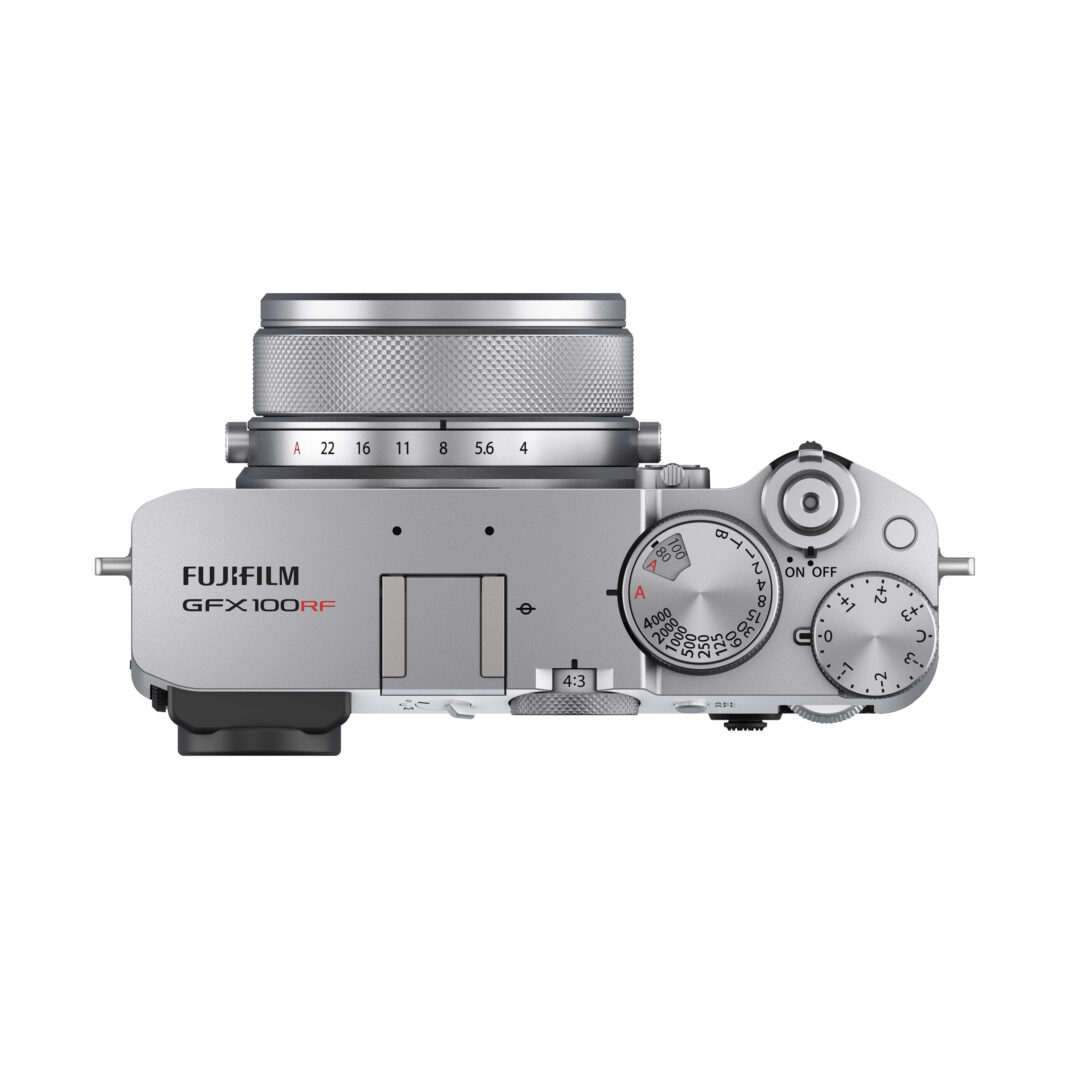
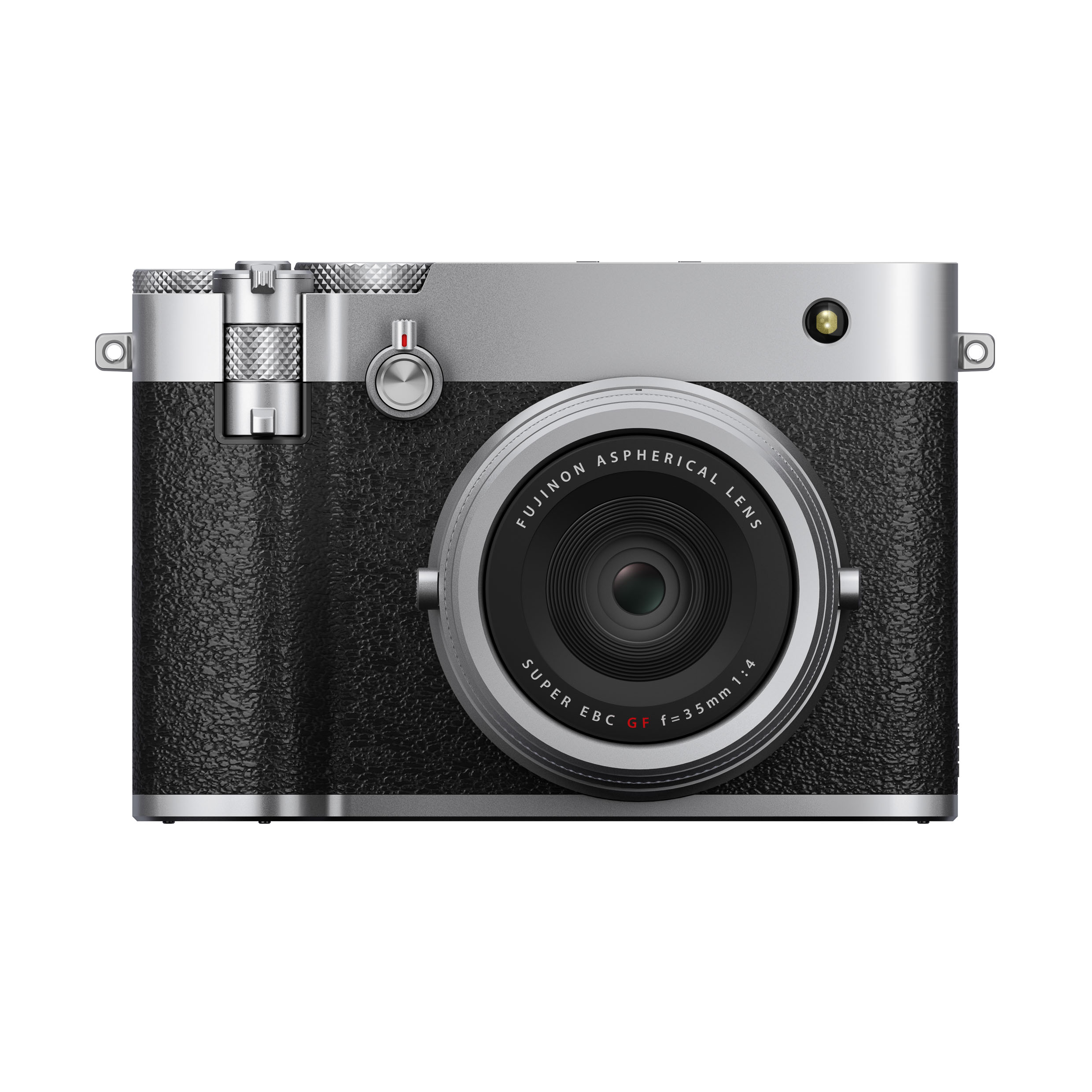
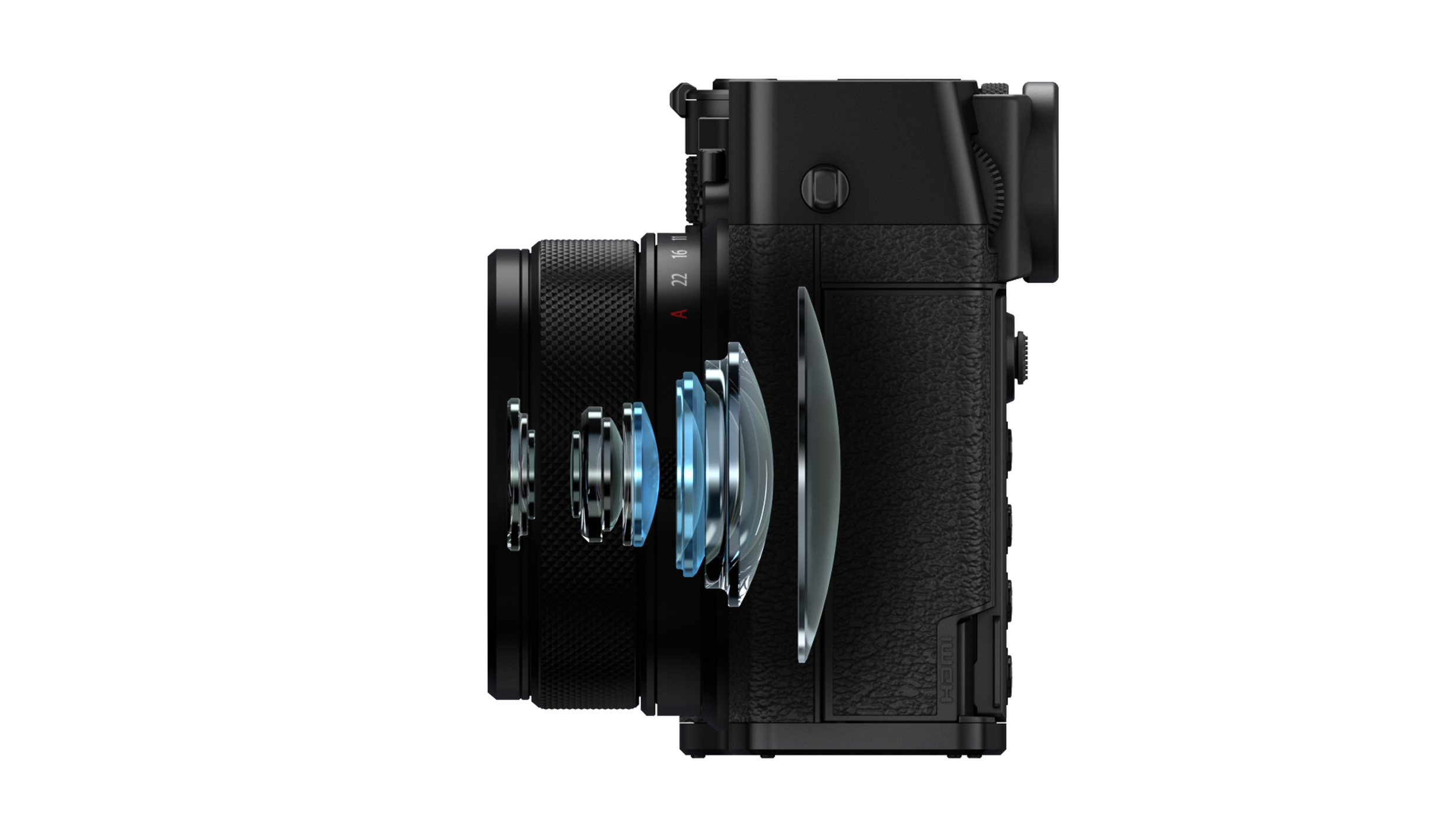
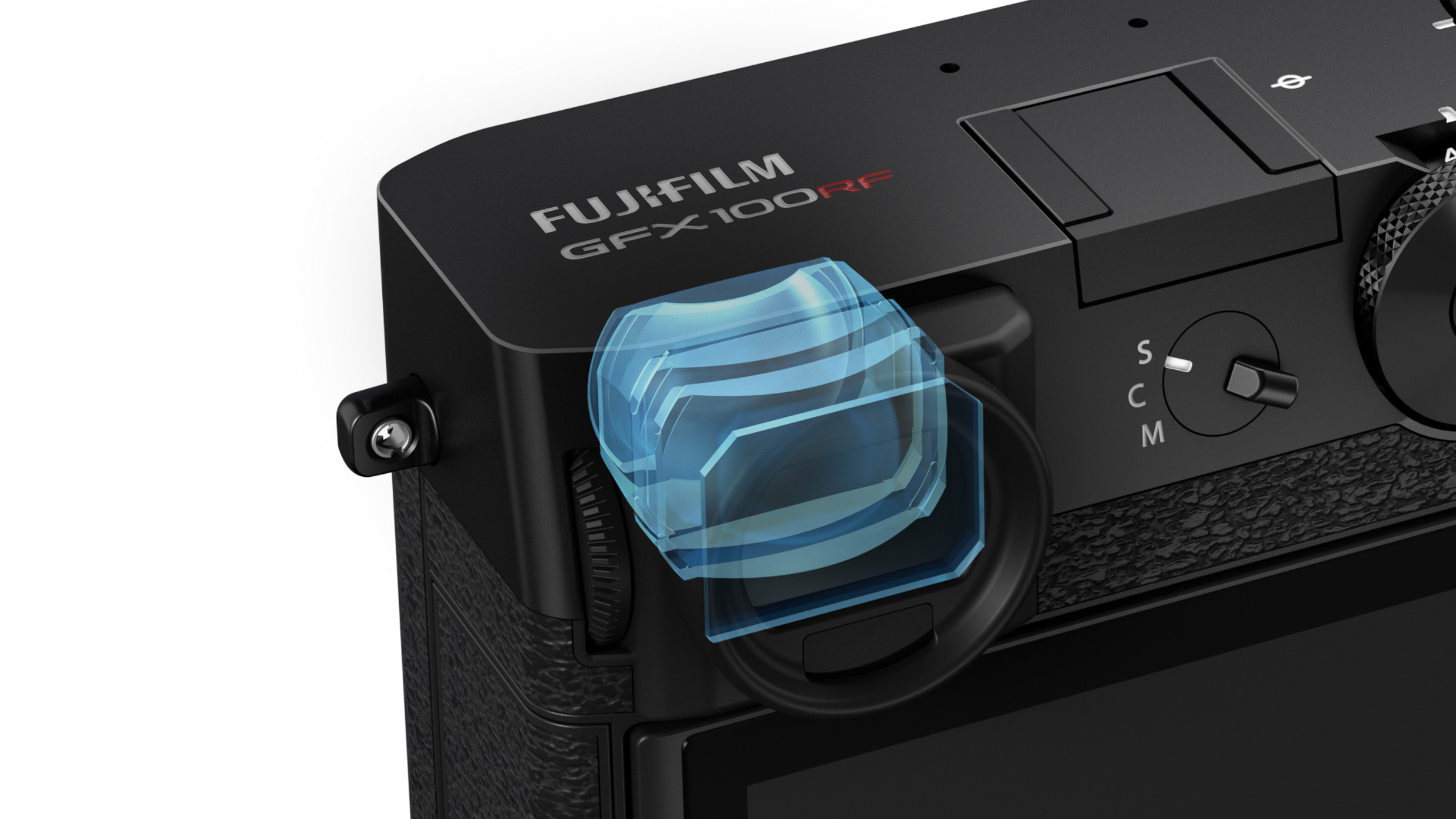
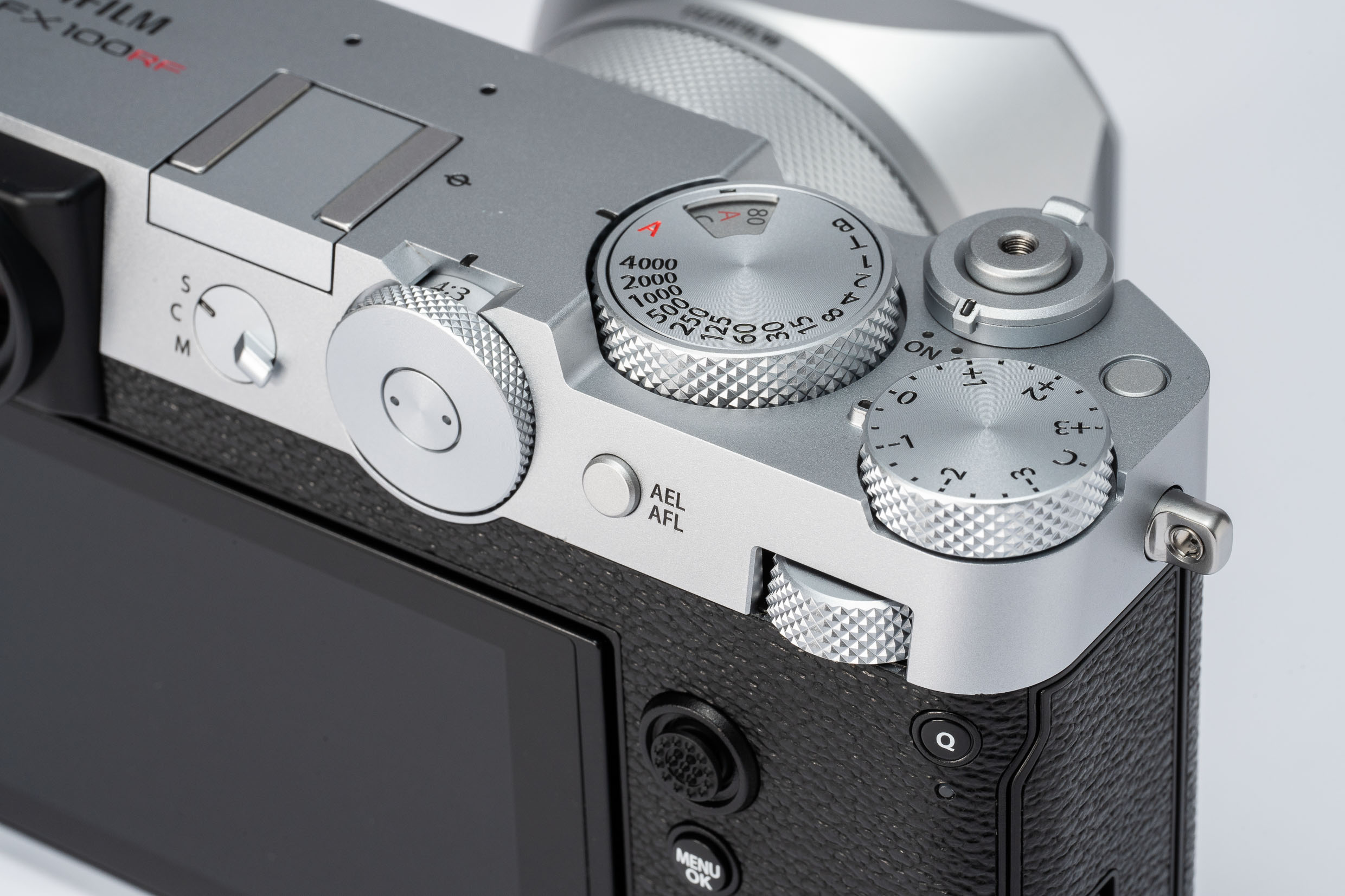
Fuji don’t have full frame sensors, so going to medium format was a given for them.
As an owner of a Q3 and a Q3 43, I was intrigued enough to buy a GFX100RF to see what it can do. I haven’t received it yet, but it will appear on Monday.
I see particular use cases for the Fuji that the Q’s cannot do and vice-versa.
Architecture, landscape (especially the panoramic aspect ratio), higher resolution images, multiple exposure, better auto focus, better and more film simulations, better battery life, significantly cheaper batteries ($69 vs. $348), better ergonomics, a one body solution rather than 2 etc etc.
The Q’a are fine but they have some irritating aspects and the ergonomic accessories (grip and thumbs up) as well as round hoods cost a ridiculous amount.
Will the GFX100RF II come with IBIS and a faster lens? Perhaps but it depends how well this model sells.
If it outperforms the Q’s in most aspects except low light then it will probably get a lot more use from me.
We are currently testing the GFX100RF which we purchased for evaluation. It is certainly an interesting camera and Fujifilm have done a great job shoehorning such a large sensor into a “small” body.
Nice initial review on PetaPixel, pros and cons.
I’m using a couple of Fuji cameras/lenses now, so I’m not against the brand. I’m always a bit iffy about fly-by-wire focusing, though.
This is a really interesting product, not one that I would consider buying, but I have looked at the GFX system in the past, and held one in my hands at Fujifilm London – and the GFX 100 cameras are really nice to hold and produce decent images.
It is the same weight as my Nikon Df, and I think its close to the weight of the Q – so is clearly an attempt by Fuji to pull people across to their brand. Also a few content creators on Youtube suggesting it might a second carry for professional GFX owners (but I wouldnt understand the logic of that versus carrying a second GFX body).
In all I see this as a positive expansion of the GFX range, and a good move by Fuji to draw people to their brand.
Very compelling product offer from Fuji. If it delivers I am sure it will be hugely successful. And having shot with Hasselblad H glass (made by Fuji), Fuji rangefinders, Fuji medium format film cameras, X-Pro1, X-T1, X100T and the 35mm film Fuji Klasse W I personally have never been disappointed by Fuji glass. I would be very surprised if we were dealing with an “inferior optic” here…
I agree that it is unlikely to be an inferior optic. Anyway, this camera will deliver images beyond the capability of many photographers.
I may one of the few people on the planet who really don’t understand the appeal of this camera. Slow F4 lens, no IBIS, … I can only imagine this appealing to landscape photographers who want 100 megapixels and use a tripod for every shot. Personally, I’d choose the Q3 with “only 60 megapixels” and fast f1.7 lens and in-lens stabilisation, every day of the week. Maybe I’m just missing the point of the camera and I would be delighted to be enlightened. Can anyone tell me what is the case for buying this camera?
“The other factor that will polarize buyers is the lack of in-body image stabilization (IBIS) on the RF” This from one of the reviews out there.
That raises a question about low light usage of the RF at slow shutter speeds when its maximum aperture (f/4.0 equivalent to f/3.1 FF) is slower than that of the Q3 28 (f/1.7) or Q3 43 (f/2.0)
Lack of IBIS wouldn’t make it too different from the digital M cameras. One thing I think people are forgetting is that the 100MP is on a larger sensor. So I don’t think the pixel pitch / footprint is actually all that different from an M11’s 60MP FF sensor, and people take nighttime shots with the M11 all the time.
With that said, IBIS would be my number one want from the M12. I find that I can only stop down to f/4 in dark nighttime scenes before IQ starts getting compromised one way or another.
I am interested in this camera. I do not see a problem with the f/4 lens with current low light abilities of camera. How many people shoot at f/1.7 with a wide angle? If you think you need wide aperture wide angle images buy something else. If this had a faster speed lens everyone would be jumping up and down on it about the big size. Also, what makes people think it is going to be a poor lens when they have not seen image results! Seriously people, get a grip. If it is not for you, do not pee on others that just might take better images.
I think I would just love this camera and enjoy the incredible images it will produce.
One of the reviewers I listened to yesterday suggested the F4 on the medium format sensor is around F2.5-2.8 – so pretty wide anyway – and as you rightly point out hardly any of us use a fully wide aperture on the lens we do have.
I believe it is more like f3.2 but even then for most street, travel, documentary and walkaround photography this is more than sufficient. IBIS is a obviously a compromise in favor of size and weight but other than that I can see very little wrong with this camera. A really good move from Fuji in my opinion.
Reminds me a bit of the Texas Leica, medium format film rangefinder built by Fujifilm.
There are many things to like about the RF. But I will pass. Having shot with the GFX system extensively and now owning both a Q3 and Q3 43, I find the optics of the RF not compelling enough. And the boost in sensor quality is there for sure, but not enough to choose an inferior optic over the Q series. There are physical limitations. The GFX with the 55mm F1.7 is an amazing combo but is just way too big. That is where the Q3 43 shines. And we need to ask ourselves the question, when is good ‘good enough’?
Good assessment, Erwin. It seems to me that the RF is unashamedly a big brother to the X100VI. It looks similar and has similar controls. It is therefore able to muscle in on a the goodwill created by the X100 among its band of enthusiasts. As such, it may be a more logical “big sensor” upgrade for those people than the Q. It will be interesting to see how this all works out.